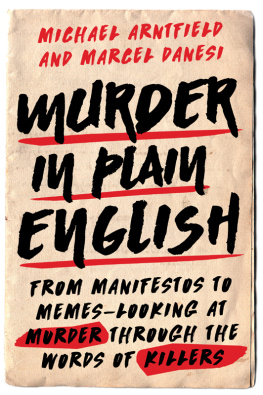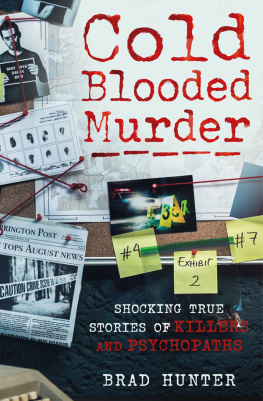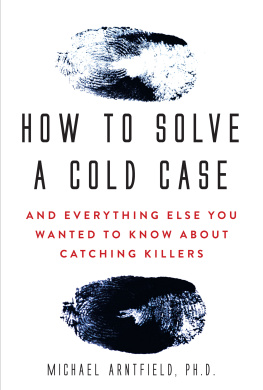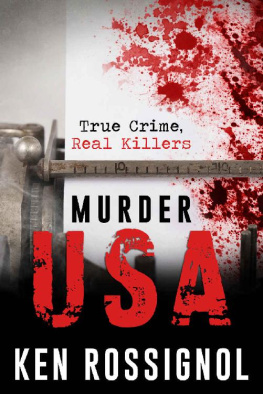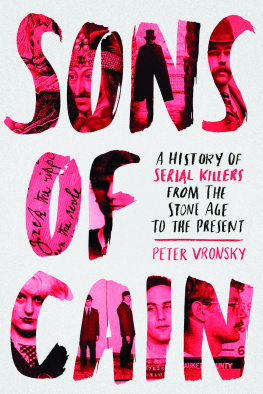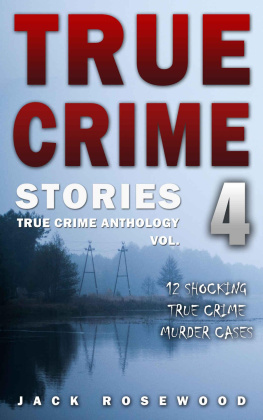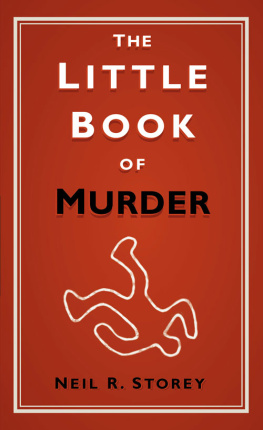
The line between thinking murder and doing murder isn't that major.
Oliver Stone, World Weekly News, September 6, 1994
Then she struck his neck twice with all her might, and cut off his head. Next she rolled his body off the bed and pulled down the canopy from the posts.
Quite a gruesome murder, isn't it? It reads like something plucked from the pages of some lurid crime tabloid, scandal rag, dime novel, or penny dreadfulperhaps something from the Whitechapel Ripper era. But as contemporary as the above graphic depiction reads, it actually appeared in the Old Testament. The whole passage is as follows:
She went to the bedpost near Holofernes head, and took down his sword that hung there. She came close to his bed, took hold of the hair of his head, and said Give me strength today, O Lord God of Israel! Then she struck his neck twice with all her might, and cut off his head. Next she rolled his body off the bed and pulled down the canopy from the posts. Soon afterward she went out and gave Holofernes head to her maid, who placed it in her food bag. (Judith 13: 610).
Tales about murder that mirror the narrative tropes of today's obsession with true crime date to antiquity, from ancient hieroglyphic and cuneiform stories to biblical tales of violence; and they all have diverse meanings etched into them. All species kill instinctively for survival or for territory. Only the human species, however, carries out intentional murders for some reason other than survivalmalice, jealousy, financial gain, lust, hatred, revenge, patriotism, a warped sense of justice, gang solidarity, and even pleasure. Victor Coppleson's rogue shark hypothesis based on the 1912 Jersey Shore shark attacks on vacationing swimmers, which inspired both the 1974 Peter Benchley novel and subsequent blockbuster film Jaws, suggests that some Great White sharks, like the Jersey Man-Eater, as it became known, might kill humans for sport, rather than for survival. This theory, if true, would imply that murder with malice might actually jump the species line and apply to nonhuman animals as well. Today, Coppleson's theory gets solicitous treatment and generous replay every year as part of Discovery Channel's famed Shark Week, but it has otherwise been widely discredited by science. The truth is that humans are the planet's outliers when it comes to murder. We are, needless to say, also the only species that has the ability to document our experiences associated with murder through the written word.
The Book of Judith is one of the longest standing examples of a murder tale, telling the story of the humiliating defeat of the imperious Assyrians at the hand of Judith, a brave Hebrew woman. Her beheading of the Assyrian general Holofernes, in his own tent and with his own sword, was thus hardly seen as an assassination, much less a criminal act of murder; rather, it was viewed as an act of valiant heroism. Clearly, as this and many other similar talesboth religious and secular alikeemphasize, murder is more than killing, depending on historical context and setting. Murderers can, in fact, be perceived and portrayed either as villains or as heroes. There is no one single tale of murder. It all depends on who, where, when, and why murder is committed and, most important, who gets to tell the storyand how he or she does so. Some stories are told in courts of law as prosecutors and defense attorneys grapple for control of the master narrative, which may or may not reflect an accurate and truthful account of events. Others are told in our many modern arenas of spectacle, from the commercial press to the theatrical stage and even the Internet. Some are told by the murderers themselves, who chronicle their versions of events so that their actions might find some legitimacy and social meaningsome carry-forward value as parables or cautionary tales to others. In all cases, though, the murder of another human being evokes a powerful emotional reaction in everyone, from writer to reader. The only thing to conclude at this early point is that murder is, for some mysterious reason, an intrinsic part of the human condition.
We begin our trek on the meandering trail to understanding murder by looking first at various stories and accounts of murder. The study of crime, typically relegated to traditional schools of criminology and their proponents past and present, often turns out to be pedantic and proscriptivewith few real implications for understanding the role of murder in human life. In fact, the self-avowed experts in crime and violence populating various academic and media circles are, in many cases, individuals who have had little or no field experience, nor any direct exposure to violence, victims, or offenders, fiddling with dated statistics or artificially collecting data that do little more than muddy the waters. We intend to use a humanistic approach instead, as mentioned in the prologue, examining murder stories in the same manner as a literary critic might analyze novels or playsthat is, by critically analyzing murder as a narrative performance. Our perspective, as pointed out, is known as literary criminology, or the study of murder through texts about murder. The Book of Judith is therefore an ideal starting point; it is a perfect example of how this kind of approach unfolds hypothetically. Modern-day scholars view Judith's narrative as a historical romance written for didactic purposes, that is, as a story imparting some historical and/or moral lesson, not as factual reportage on an ancient heroic murder. Its author is unknown and actually seems to have skirted around several historical facts about the real incident upon which the story is based. But this is irrelevant to those who read it in the context of patriotism and liberation from domination. Such a regardless of whether that narrative is fact or fiction.
A literary criminological approach is all about how factors such as history, cultural interpretation, and modes of storytelling overlap with biological instincts and psychopathic traitsdisordered and dangerous frames of mind. We will not ignore the scientific facts. Indeed, we believe that science and the humanities have been artificially separated for too long, especially in the study of crime. We need them both to gain meaningful insights into a horrific life-denying act that has, in many ways, driven both the great plots of history and the plots that make up everyday life.
WHAT IS MURDER?
Murder isn't easy to define. It is not equivalent to killing (as briefly discussed). Taking a human life is not always defined as murder. This is why so many types, or more accurately degrees, of murder are distinguished in America and throughout the Commonwealth legal system of the western world. Also, calling murder a crime is a comparatively modern practice. In medieval society, murder was perceived as one of the seven deadly sins, a moral failing that seriously interfered with living a spiritual life committed to God. As the role of religion in everyday life started declining by the outset of the Renaissance, sins started being recast as crimes, both legally and socially.
But crime did not become instantly immune to moral interpretations (or more exactly misinterpretations). In the not-too-distant past, women were accused, convicted, and punished for practicing witchcraft, since it was seen as being a corollary of devil worship and black magic. Under this interpretive rubric, an estimated five hundred thousand people in Europemostly womenwere burned alive at the stake between the fifteenth and seventeenth centuries alone. Now, while the theological explanation that murder was a manifestation of evil forces at work in corrupting the soul, in a secular world criminologists would explain it variously as the effect of mental dysfunction, an impulse-control disorder, the result of an aberrant upbringing, and so on. But the sense that murder is a transgression of some moral code has not disappeared. It continues to prevail even among modern societies.
Next page
